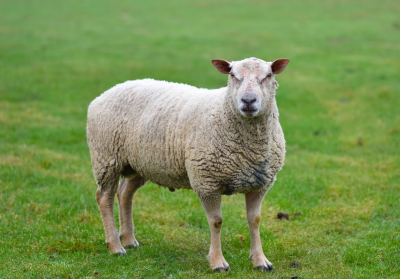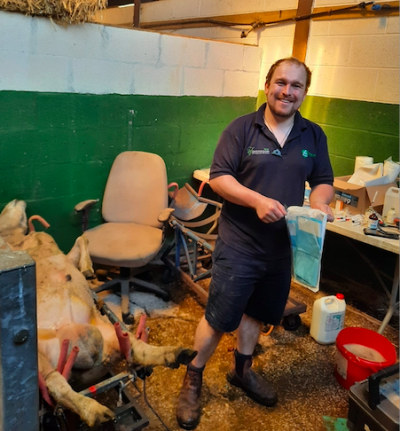
By Vet Bruce Richards BVSc DBR MRCVS
Why use a teaser tup?
Teaser tups can be used to improve breeding performance in flocks in both early and conventional lambing systems. The teaser is a tup that has been vasectomised. He retains his testicles and therefore compulsion to serve ewes but because his vas deferens tubes have been partly removed, he no longer produces semen containing sperm.
Introducing a teaser tup to a group of ewes will stimulate the ewes to cycle and encourage them to ovulate. When any tup (fertile or teaser) is introduced to a group of ewes, the ewes generally have a “silent heat” 3-4 days after introduction. This silent heat is not fertile but is a necessary precursor to fertile oestrus at the start of every breeding season in sheep. Ewes will then have two peaks of normal oestrus 17 and 25 days later.
Therefore, when a fertile tup is introduced without a teaser, there is little chance that he will start to father lambs until the ewes have their second heats at 17 and 25 days. Introducing the fertile tup after the teaser has been with the ewes for 14 days means that there is a higher chance of pregnancy at the start of the breeding period and can help to make the lambing season significantly more compact and maximise the number of lambs born at the beginning of lambing.

How are teaser tups produced?
Selected teaser tups should be proven as fertile, structurally sound and passing the same pre-breeding checks as fertile rams. Ideally a yearling tup should be chosen after his first breeding season before being vasectomised, however well grown mature ram lambs can also be used effectively.
It is vital he is clearly identifiable so the wrong animal is not used as a teaser!
The vasectomy surgery is typically carried out under sedation or general anaesthetic and it is a relatively straightforward procedure. It is important to note that the tup may remain fertile for up to 6 weeks after he is vasectomised due to sperm residing in his accessory sex glands so make sure the surgery is carried out in plenty of time.

Suggested protocol for using a teaser.
1. Day 0 – Introduce the teaser to the ewes (aim for 5 and half months before expected start of lambing.)
2. Day 14 – Remove the teaser and introduce the breeding tups.
3. Day 25 – Remove the breeding tups or change the marker so matings are identified.
In AI systems, teasers can be used after the removal of the CIDR or Sponge to detect when the ewes are in oestrus, helping to more accurately pinpoint the time for AI.
In Embryo Transfer (ET), teasers can be used to increase superovulation rates (produce more eggs) from donor sheep.
Similar to AI, teasers with the recipient sheep in ET systems can be used to more accurately identify oestrus timing for Embryo implantation afterwards.
Ensuring good results?
Choose a healthy, proven tup to be made into a teaser. Try to avoid using elderly tups.
It is critical that ewes have absolutely no contact with any tup (teaser or not) for at least 2 weeks and ideally a month before the teaser is introduced. This practically means keeping them at least 1 mile apart.
Aiming for a ratio of one teaser to between 50 and 100 ewes is generally effective. When adding the stock rams, go for a low ratio of one tup to 20 ewes to maximise pregnancy rates in a short breeding season.
Ensure ewes are in good condition and check your breeding tups are fertile beforehand. The use of teaser tups can be an incredibly effective way of tightening your lambing period. To find out more about the practicalities of surgery with your local practice talk to your vet.